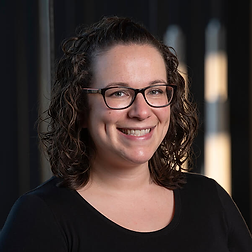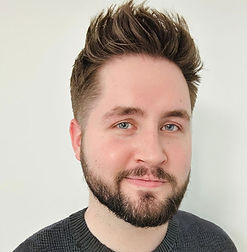Our History
We always believed in the power of occupation to give meaning to life, to support health of humankind, and to hasten healing from illness, injury, injustice, and detrimental circumstances. But much of the profession remained skeptics or did not understand. Our story begins with the hope that all occupational therapy practitioners, health professionals, and the public recognize the health-promoting power of occupation.
In an early discussion of research ideas about occupation-based practice, it was evident there was no way to measure occupation-based practice for a quantitative study. In fact, there was no framework to identify when it was happening. The ideas grew from there to first develop a model to identify the constructs of occupation-based practice. The result of that aim is the Dynamic Model of Occupation-Based Practice which not only identified the constructs, but recognized the positive and negative influences on the use of occupation as well as a continuum of occupation-based practice. Developed from the model constructs, the Occupation-Based Practice Assessment was developed to measure the use of occupation in practice. The assessment now has five scales to capture occupation in (1) individual interventions, (2) group interventions, (3) assessment, (4) measurement tools, and (5) the influences on the use of occupation-based practice.
The journey has continued across practice areas and populations studying the use of occupation in practice, the presence of occupation in assessment tools used in practice, and occupation-based communities of practice. Studies are underway to explore occupation-based practice during fieldwork experiences, in the neonatal intensive care unit, and in community practice. We are excited to see where the journey leads as occupational therapy practitioners harness the power of occupation and join the occupational revolution.
Our Team
Our team of experts is dedicated to advancing the field of occupation-based practice through innovative research and practical application. With a deep understanding of the Dynamic Model of Occupation-Based Practice, our professionals work tirelessly to overcome barriers and optimize facilitators to enhance client outcomes.
Meet the Founders

Wendy Stav, PhD, OTR/L, FAOTA
Dr. Wendy Stav received a BS in occupational therapy from Quinnipiac University and a PhD in occupational therapy from Nova Southeastern University. For more than 20 years her work focused on driving and community mobility earning a place on the AOTA Roster of Fellows in 2009 for her contributions to the advancement of driving and community mobility practice. The motivation behind her community mobility work was recognition of of driving as an occupation-enabler. As such, Dr. Stav’s work transitioned to occupation and occupation-based practice. The focus on occupation has resulted in occupation-based clinic makeover studies, the development of a model of occupation-based practice, creation of an assessment to measure occupation in practice, and mentorship of several dissertations which have evolved into research partnerships. Dr. Stav serves as the department chair of the Department of Occupational Science and Occupational Science at Saint Louis University.
Email wendy.stav@gmail.com

Sarah Psillas, PhD, OTR/L, CEIS
Dr. Sarah Psillas earned a BS and MS in occupational therapy from American International College and a PhD in occupational therapy from Nova Southeastern University. Her interest in occupation as the core of the profession led to dissertation research and discovery of the constructs and continuum of occupation-based practice. Her clinical experiences include specialization in pediatric practice and assistive technology. She serves as the founding Program Director for the Occupational Therapy Program.
Email sarahpsillas@gmail.com
Meet the Contributors

Alysha Skuthan, PhD, OTR/L,
Dr. Skuthan had dedicated her career to pediatric practice and research. Her research on the occupational nature of assessments used in pediatrics shed light on the overwhelming use of development and skill-based assessments in lieu of occupation-based assessments. Her work also revealed the limited ability to identify whether assessments are occupation-based. Dr. Skuthan's ideas where the foundation for the Measurement Tool Scale in the OBPA. Her research further revealed the positive occupational trajectory when practitioners use occupation-based assessments. This revelation was the impetus for the occupation-based review of assessments series. Dr. Skuthan is an adjunct assistant professor at Shenandoah University.
Email alyshastoner@gmail.com

Jill Cancio, PhD, OTD, OTR/L, CHT, BT-C
Dr. Cancio has extensive clinical and research experience in burns, orthopedics, neurorehabilitation, and hand therapy. Her work extends beyond civilian practice as her clinical and scholarly work has been in the military health system. Dr. Cancio's interest in occupation includes the use of occupation to facilitate "return to duty" for military personnel as well as the use of occupation-based assessments where biomechanical approaches are traditionally used. Dr. Cancio's scholarship includes the first occupation-based review of assessments along with development of the manuscript template for other researchers to review assessments. She is currently a clinical researcher at the U.S. Army Burn Center in Ft. Sam Houston, TX.
Email jillschnell4@gmail.com

Jordan Bowling, MOT, OTR/L
Professor Bowling’s clinical expertise is in pediatrics, most specifically the school-based practice setting, but he has also worked in adult/geriatric practice in skilled nursing facilities and home health practice. His research interests include promoting occupation-based practice in school-based service delivery, supporting students and educators in the use of evidence-based practice, and developing communities of practice for occupational therapy practitioners in schools. Jordan's research is on the effectiveness and professional growth through an occupation-based community of practice. Jordan is currently a clinical assistant professor at the University of Hartford.

Kristin Walden, MOT, OTR/L, CLC, CNT
Kristin's work in the neonatal intensive care unit with a focus on occupation as she employs family-centered care has lead to conceptual innovations. Her research has produced a new conceptualization of co-occupation and how we think about people co-engaging. As she progresses toward her PhD, she is conducting ground breaking work on the difference in occupation-based practice when parents are present vs. absence in the NICU and the relationship between co-occupation and occupation-based practice. Kristin is a neonatal and pediatric occupational therapist Rainbow Babies Children's Hospital in Cleveland Ohio.
Email waldenk13@gmail.com